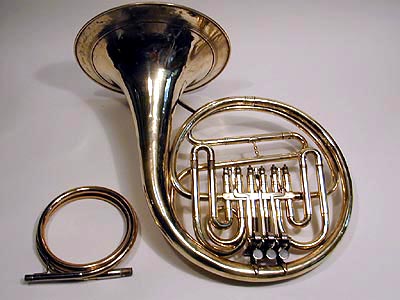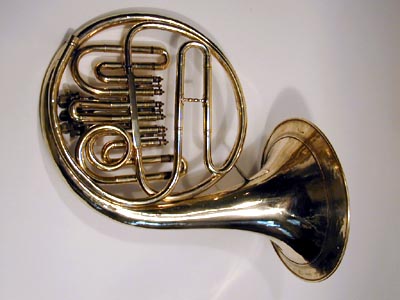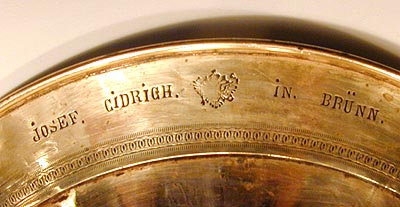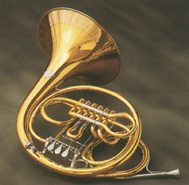| This is a very nice example of an early Vienna horn
design. Josef Cidrich (Zidrich) was born in Brno, Moravia in 1817.
From 1830 to 1834 he studied under his father Jakob Cidrich (1756-1858)
and on completion of this apprenticeship he began working in his father's
shop in Brno. In 1855 Josef established his own brass instrument
shop independently. Upon his father's death three years later Josef
succeeded him with his younger brother Johann (1829-1893) working for him.
The Cidrich shop flourished until the death of Johann in 1893. Josef
Cidrich died in Brno on March 27, 1899.
The Moravian city of Brno (or Brünn in German) lies about 130
km. north of Vienna in the Czech Republic. During the nineteenth century
while still under rule of the Austrian Empire it established itself as
a major manufacturing center primarily in textiles. Regular railroad service
between Brno and Vienna was inaugurated on July 7, 1839. with the first
train travelling the 144 km (89.5) line in four and a quarter hours. This
proximity to Vienna no doubt had some influence on the musical development
of the city and provided the opportunity for instrument manufacture in
the Vienna tradition, especially since the Brno horn school was not founded
until 1919.
Invention of the double-piston "Wiener pumpen" valve is attributed
to Joseph Kail and Joseph Riedl, both of Vienna, in 1823. In 1830
Leopold Uhlmann made certain improvements to the valve which remain as
the standard to the present. Riedl's Vienna horn wrap of 1830 was
very symetrical in design of the valve slides, as is this model by Cidrich. |




